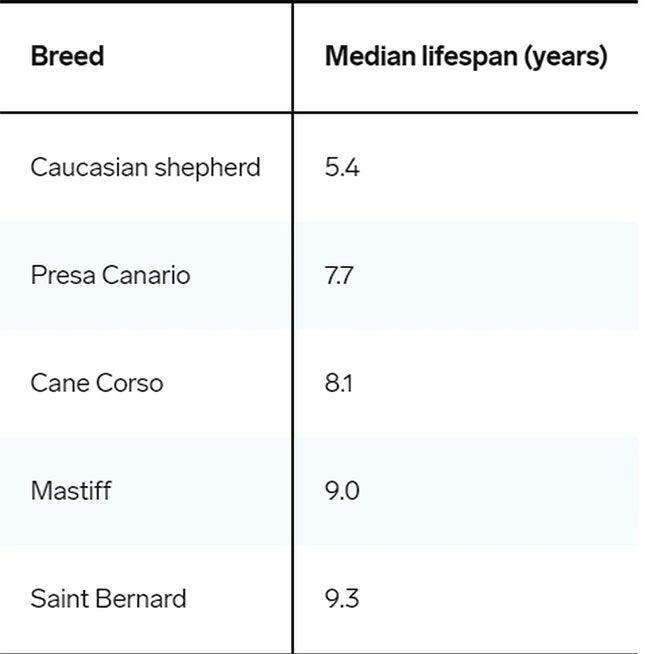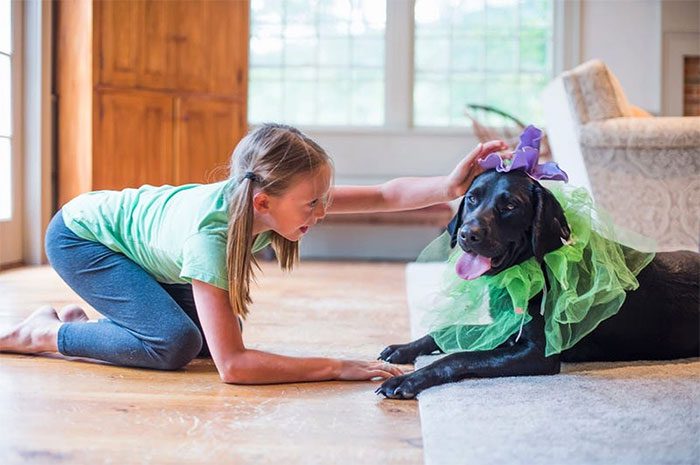Scientists Discover the Longest-Living Dog Breed After Studying 155 Different Breeds Worldwide.
The Dog’s Trust UK organization has conducted research on the relationship between lifespan, breed, body size, gender, and facial structure of 155 different dog breeds. They discovered that Tibetan dogs and Shiba Inus live the longest, while larger breeds such as Mastiffs and Saint Bernards have the shortest lifespans.
According to this study, the average lifespan of dogs is 12.5 years. Among purebred dogs, the five longest-living breeds are: Papillon, Lancashire Heeler, Tibetan Spaniel, Shiba Inu, and Lakeland Terrier.

Average lifespan of the 5 longest-living purebred dogs.

Average lifespan of the 5 shortest-living purebred dogs.
All five of the shortest-living breeds are large-sized dogs.
In addition to body size, gender and facial structure also relate to their lifespan. For instance, male dogs typically live about 0.3 years less than female dogs. This trend is also observed in many other mammal species, including humans.
Furthermore, flat-faced breeds such as French Bulldogs and Pugs are at a 40% higher risk of dying earlier compared to dogs with moderately long faces like Labradors and Golden Retrievers.
Flat-faced dogs are more prone to respiratory issues and heart diseases, which often lead to shorter lifespans.
The findings above pertain specifically to purebred dogs. In contrast, mixed-breed dogs generally have an average lifespan that is 0.7 years longer than purebreds. For example, the Labradoodle, a human-bred hybrid, exemplifies this in the study.
This research is the first to explore the relationship among all factors—gender, facial structure, breed, body size, and evolution—concerning dog lifespan, whereas previous studies focused on individual factors.
Humans began domesticating dogs approximately 16,000 years ago, but the diversity and variety of dog breeds we see today have only emerged in the last 200 years.

Human breeding has resulted in new dog breeds with shorter lifespans. (Image: Westen61/Getty Images).
Humans have intentionally created new dog breeds to meet specific personality and capability requirements. For example, the Dachshund was bred for badger hunting. Its short legs and long body help it stay close to the ground for better scent tracking and allow it to burrow into narrow dens.
Humans have shaped the evolutionary history of dogs for centuries, thereby influencing their lifespans. Artificial breeding methods such as inbreeding, trait selection, and population isolation can reduce genetic diversity and lead to health problems.
Nearly 700 genetic disorders have been documented in domestic dogs, including hip dysplasia, endocrine disorders, and blood disorders.
The lead author of the study, Dr. Kirsten McMillan, hopes that this research will assist pet owners in making informed choices about the breeds they select and provide them with crucial information regarding their pets’ aging process.

Understanding your dog’s aging process will help you care for them better and extend their lifespan. (Image: Yellow Dog/Getty Images).
Knowing the lifespan of your dog not only helps you adjust the time you spend caring for your pet but also prepares you for potential health challenges they may face, an issue that impacts both your finances and mental well-being.



















































